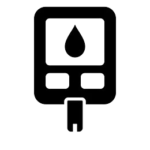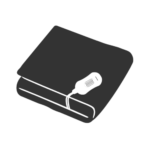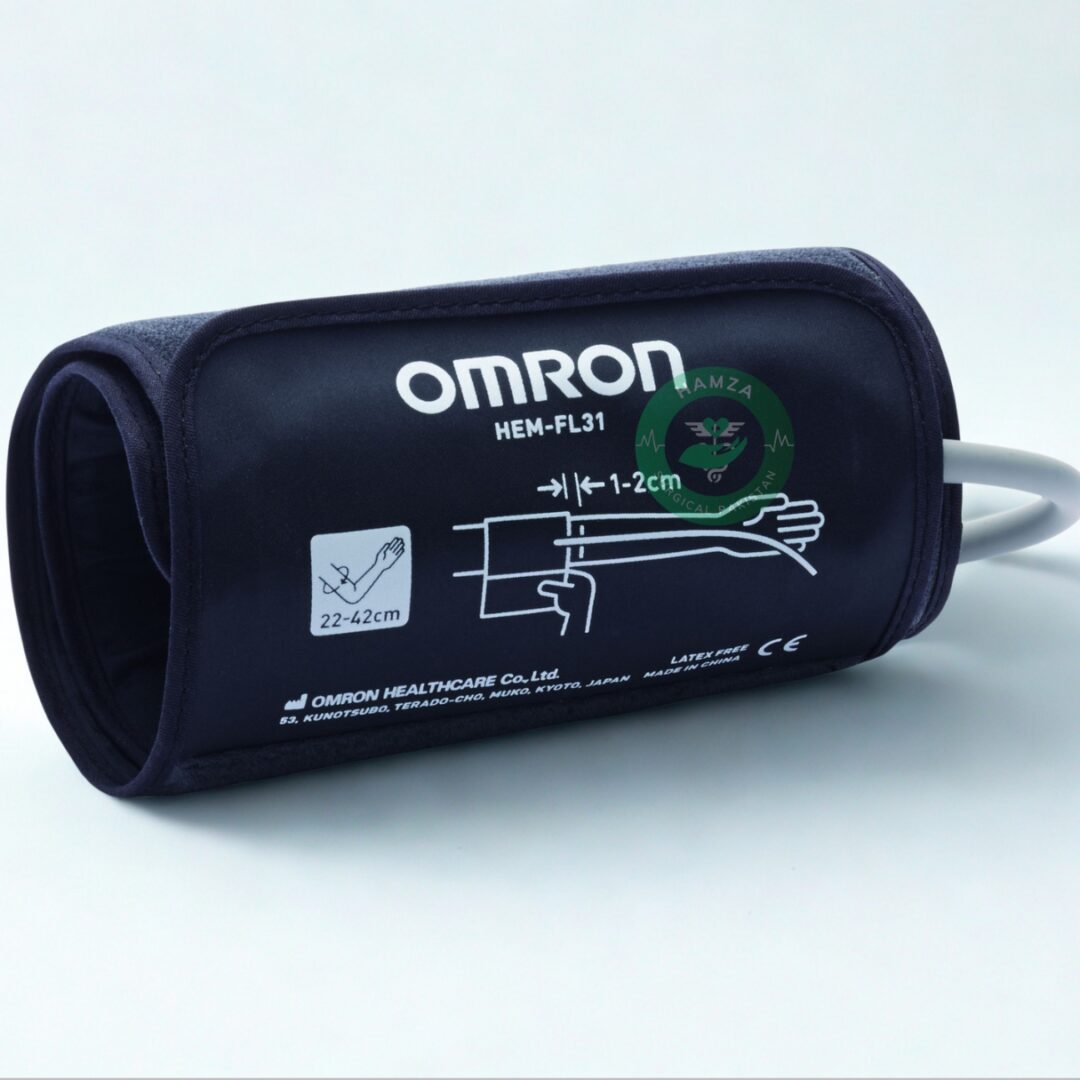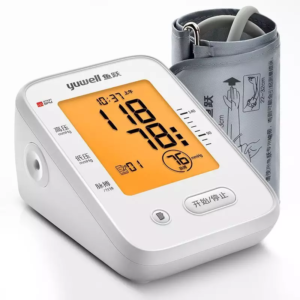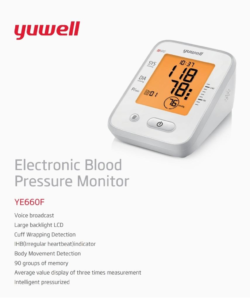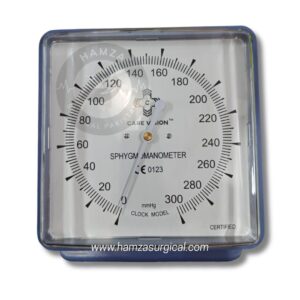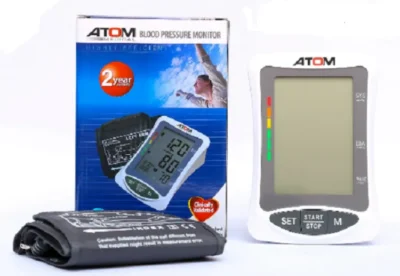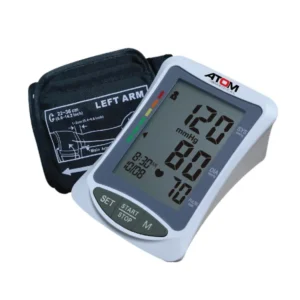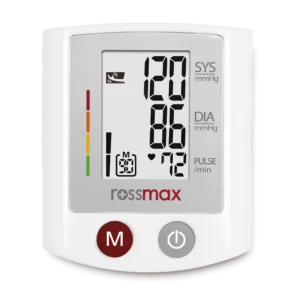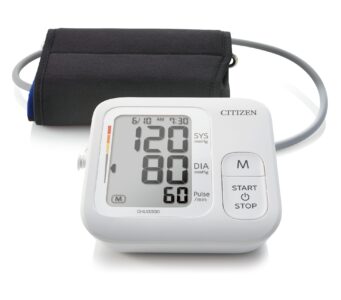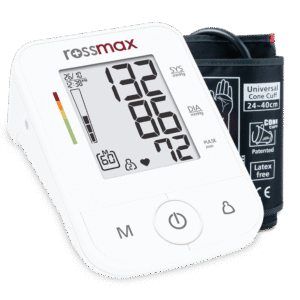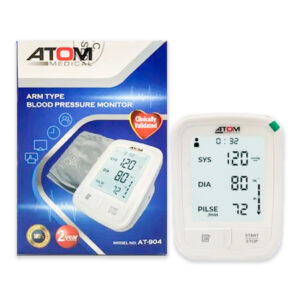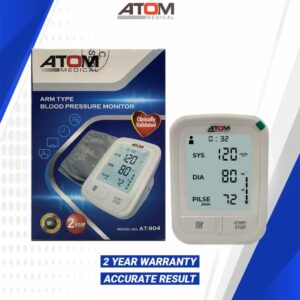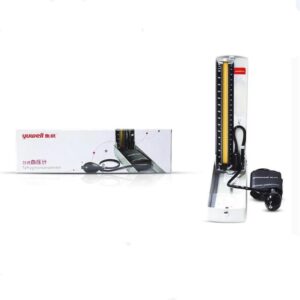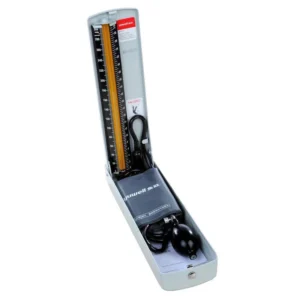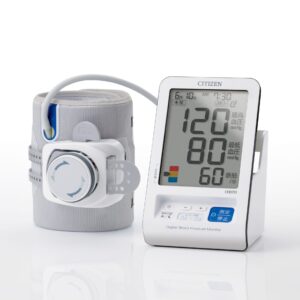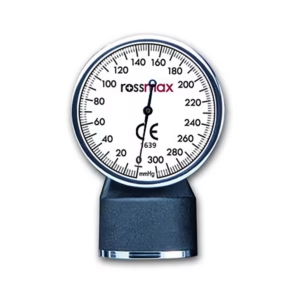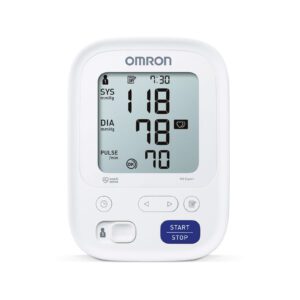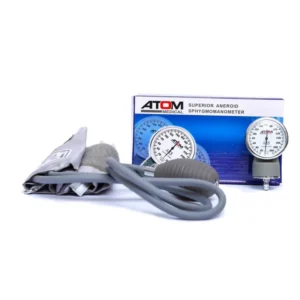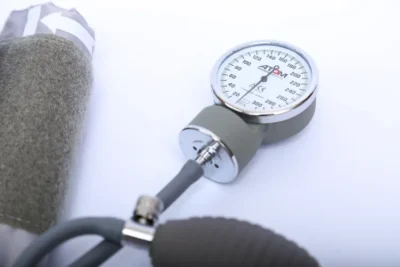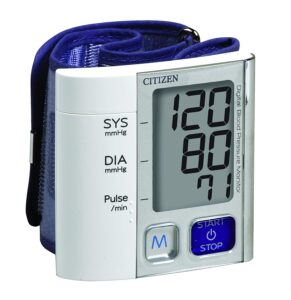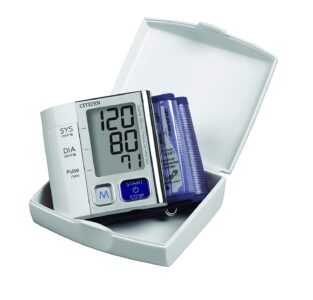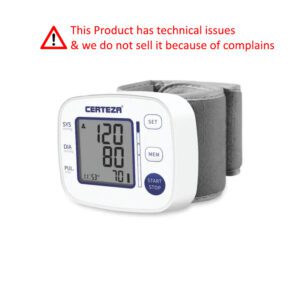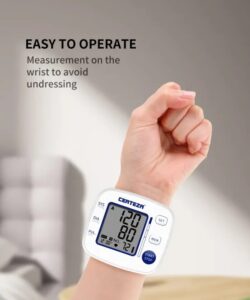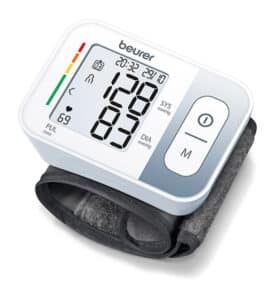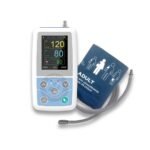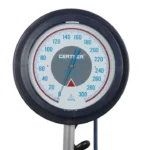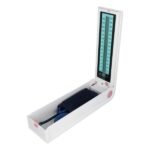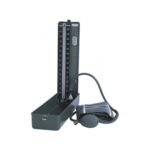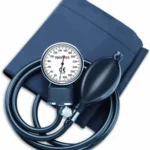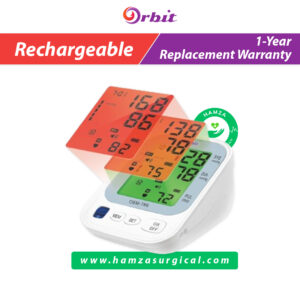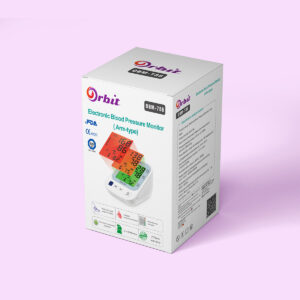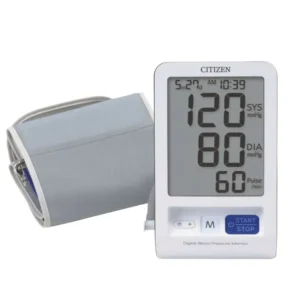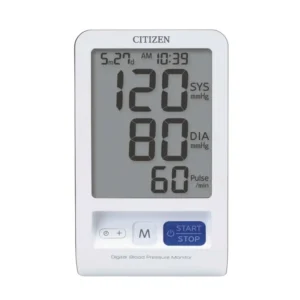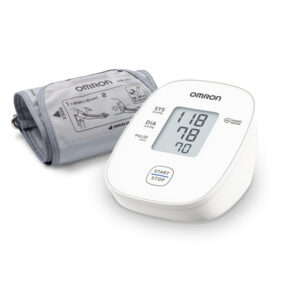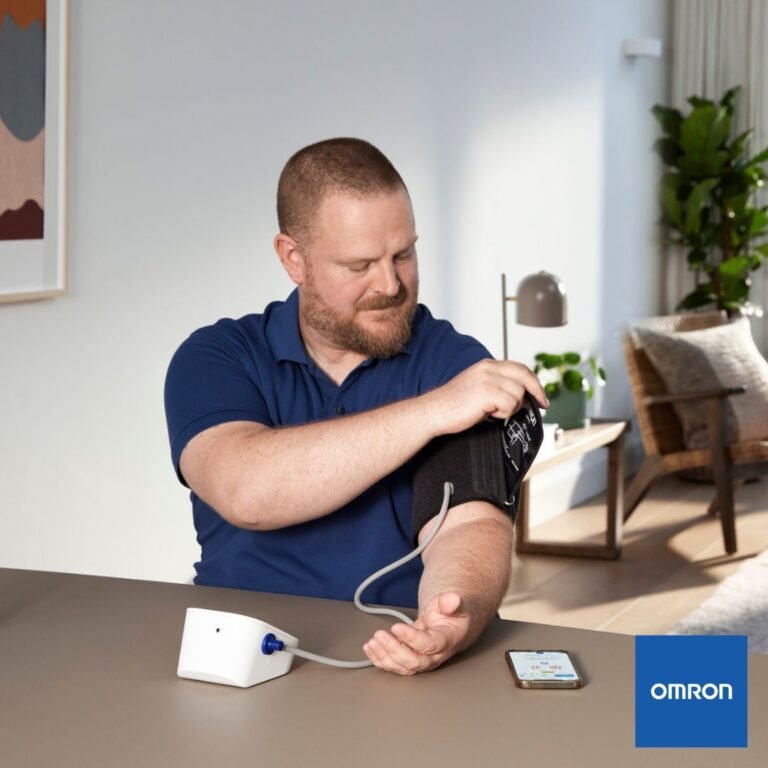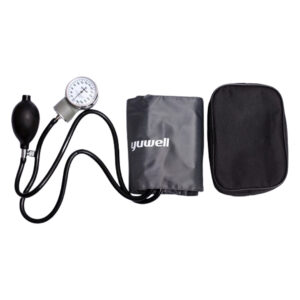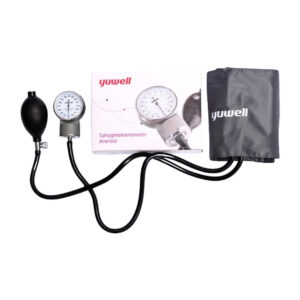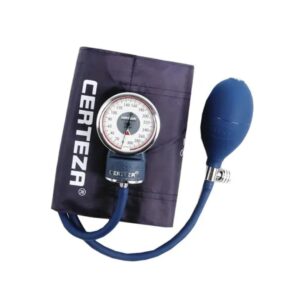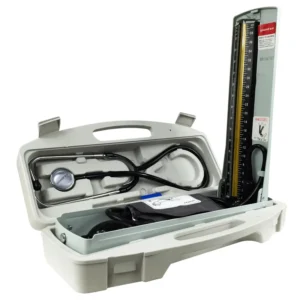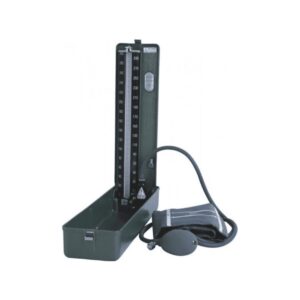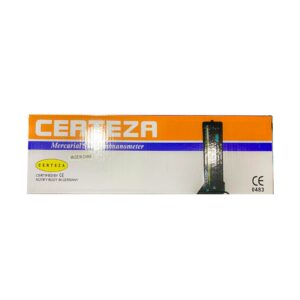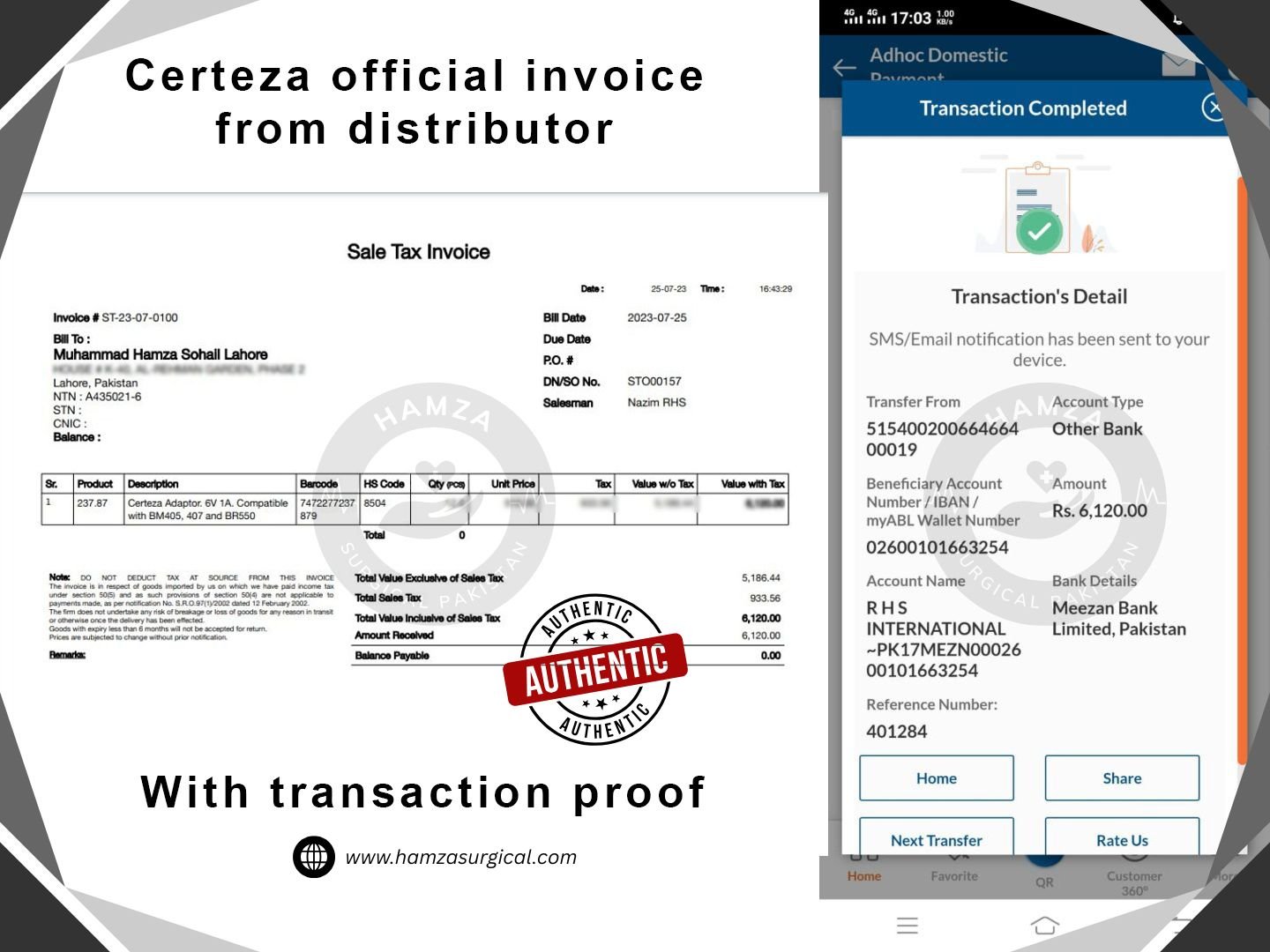Blood Pressure Monitors
Omron Cuff for M7 (22 to 42cm)
Yuwell YE-660F Digital Blood Pressure Monitor
Beurer Arm Cuff for Digital BP BM 45 / BM 49 / BM 55 / BM 75 / BM 85
Care Vision Clock-Type Sphygmomanometer
Atom Arm Type Fully Automatic Blood Pressure Monitor
Beurer Cuff for Digital BP BM-58
Rossmax S-150 Wrist Blood Pressure Monitor
ATOM AT-704 Wrist Type Digital Blood Pressure Monitor
Beurer BM-51 – Easy Clip Upper Arm Digital Blood Pressure Monitor
Citizen CHUG-330 Upper Arm Digital Blood Pressure Monitor
Believia BP-30W Wrist Blood Pressure Machine
Bliss BL-BP920 Upper Arm Digital Blood Pressure Monitor
Rossmax X3 Automatic Blood Pressure Monitor
ATOM AT-904 Arm Type Digital Blood Pressure Monitor
Yuwell Mercurial Sphygmomanometer for Doctors & Home Use
Beurer BM-55 – Upper Arm Digital Blood Pressure Monitor
Citizen CHD-701 Upper Arm Digital Blood Pressure Monitor
CITIZEN CHU-305 Upper Arm Digital Blood Pressure Monitor
Rossmax Aneroid Sphygmomanometer GB Series
OMRON M3 – Upper Arm Digital Blood Pressure Monitor
ATOM Medical Aneroid Sphygmomanometer with Large Dial
Citizen CH-657 Wrist-Type Digital Blood Pressure Monitor
Believia BP-30A Digital Arm-Type Blood Pressure Monitor
Certeza BM-300 Wrist Blood Pressure Monitor
Beurer BC-28 – Wrist Digital Blood Pressure Monitor
Find the Best Blood Pressure Machine Price in Pakistan
A blood pressure monitor, also known as a sphygmomanometer, is a high-quality medical device designed to measure blood pressure—a critical indicator of cardiovascular health. It typically comprises three main components: an inflatable cuff, a pressure gauge, and, in some models, an electronic sensor or stethoscope. Reliable results and clinical-grade accuracy make these devices essential for healthcare.

How does a blood pressure monitor work?
The cuff is wrapped around the upper arm or wrist and inflated to temporarily restrict blood flow. As the cuff gradually deflates, the device measures the force exerted by blood against artery walls, providing readings that indicate systolic (upper) and diastolic (lower) pressure. These accurate measurements, which meet international healthcare standards, help identify whether blood pressure is within a healthy range, elevated, or low.
Importance of Monitoring Blood Pressure
Consistently monitoring blood pressure is vital for detecting and managing conditions like hypertension (high blood pressure) or hypotension (low blood pressure). Unmanaged blood pressure irregularities can lead to severe health issues, including heart disease, stroke, and kidney damage. Using devices that adhere to European Society of Hypertension (ESH) guidelines ensures trustworthy results for effective management.
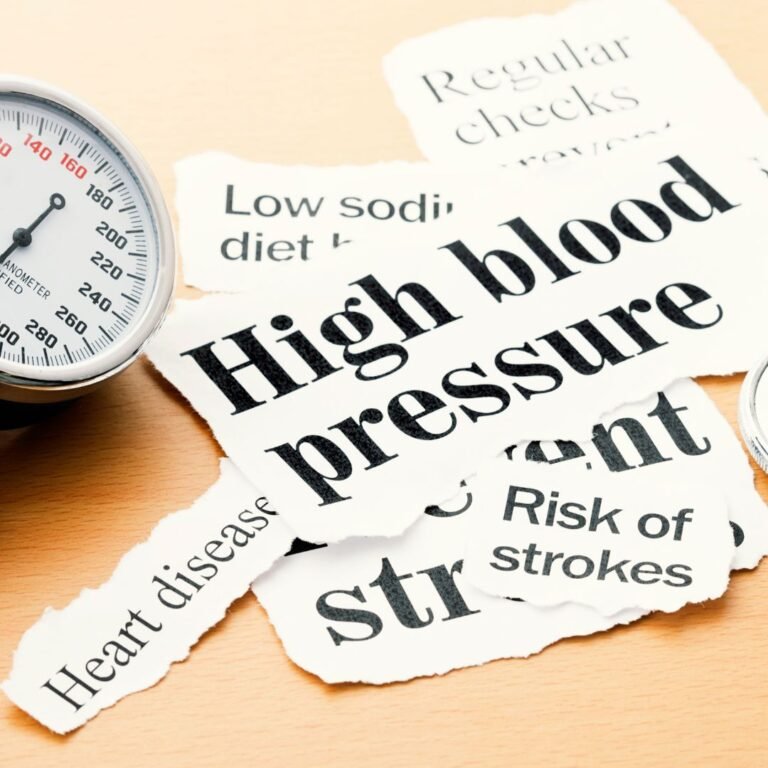
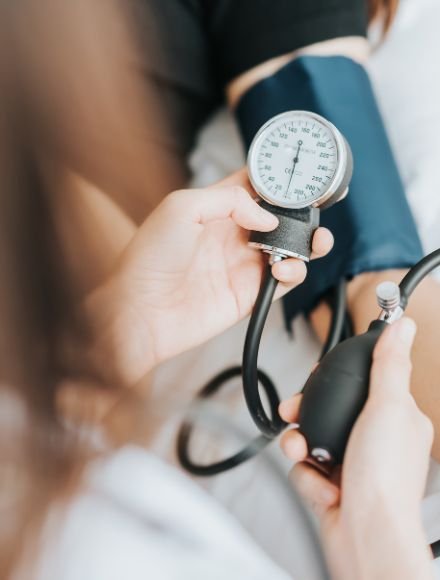
Types of Blood Pressure Monitors
Digital Automatic Monitors
- Features automated cuff inflation and provides clear digital readings.
- User-friendly and convenient for home use.
Manual Blood Pressure Apparatus
- Requires manual inflation of the cuff using a hand pump.
- Used with a stethoscope to listen for blood flow sounds, making it more suited for healthcare professionals.
Wrist Monitors
- Compact and portable, designed to wrap around the wrist.
- Convenient but requires proper positioning for accuracy.
Bluetooth and Smartphone-Connected Monitors
- Syncs with smartphones or tablets for advanced health data tracking and analysis.
- Offers features like historical data storage and sharing, enhancing user convenience.
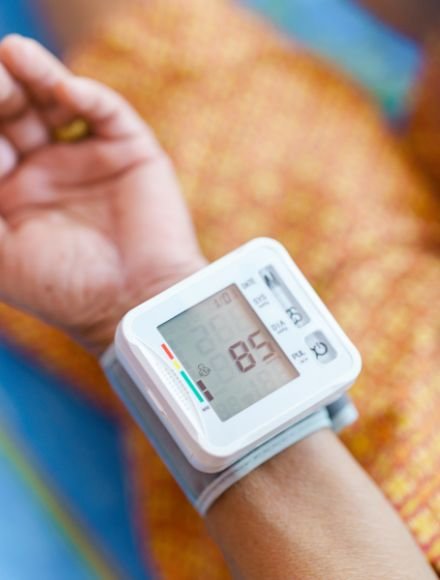
Blood Pressure Machine Prices in Pakistan
The lowest price of blood pressure machine price in Pakistan is Rs. 1,799 to highest of Rs. 81,999 at Hamza Surical. You will find that price has a huge difference because of the variations in types of machines. There are various types of blood pressure machines available, including upper arm, wrist, and finger models. Upper-arm machines are generally priced higher because they provide the most accurate readings.
Additionally, blood pressure machines come with different features. Some include memory, a display, voice control, Bluetooth, or arrhythmia detection. The price of a blood pressure machine in Pakistan will depend on the features you select. Here are some popular options:
Products | Price |
|---|---|
Rs. 199 | |
Rs. 499 | |
Rs. 599 | |
Rs. 600 | |
Rs. 800-Rs. 1,800 | |
Rs. 800 | |
Rs. 1,299 | |
Rs. 1,499 | |
Rs. 1,499 | |
Rs. 1,499 | |
Rs. 1,499 | |
Rs. 1,799 | |
Rs. 1,825 | |
Rs. 1,899 | |
Rs. 1,925 | |
Rs. 1,999 | |
Rs. 2,150 | |
Rs. 2,199 | |
Rs. 2,199 | |
Rs. 2,250 | |
Rs. 2,499 | |
Rs. 2,520 | |
Rs. 2,850 | |
Rs. 2,850 | |
Rs. 2,899 | |
Rs. 2,999 | |
Rs. 2,999-Rs. 4,100 | |
Rs. 2,999 | |
Rs. 3,099 | |
Rs. 3,199 | |
Rs. 3,299 | |
Rs. 3,299 | |
Rs. 3,325 | |
Rs. 3,400 | |
Rs. 3,499 | |
Rs. 3,499 | |
Rs. 3,499 | |
Rs. 3,599 | |
Rs. 3,750 | |
Rs. 3,799 | |
Rs. 3,999 | |
Rs. 3,999 | |
Rs. 4,199 | |
Rs. 4,200 | |
Rs. 4,200 | |
Rs. 4,300 | |
Rs. 4,350 | |
Rs. 4,499 | |
Rs. 4,499 | |
Rs. 4,500 | |
Rs. 4,699 | |
Rs. 4,699 | |
Rs. 4,699 | |
Rs. 4,750 | |
Rs. 4,750 | |
Rs. 4,999 | |
Rs. 4,999 | |
Rs. 4,999 | |
Rs. 4,999 | |
Rs. 5,199 | |
Rs. 5,199 | |
Rs. 5,499 | |
Rs. 5,499 | |
Rs. 5,499 | |
Rs. 5,499 | |
Rs. 5,550 | |
Rs. 5,699 | |
Rs. 5,699 | |
Rs. 5,999 | |
Rs. 6,100 | |
Rs. 6,199 | |
Rs. 6,499 | |
Rs. 6,499 | |
Rs. 6,499 | |
Rs. 6,499 | |
Rs. 6,650 | |
Rs. 6,699 | |
Rs. 6,700 | |
Rs. 6,800 | |
Rs. 6,999 | |
Rs. 6,999 | |
Rs. 6,999 | |
Rs. 6,999 | |
Rs. 7,125 | |
Rs. 7,199 | |
Rs. 7,499 | |
Rs. 7,600 | |
Rs. 7,999 | |
Rs. 8,550 | |
Rs. 8,550 | |
Rs. 8,999 | |
Rs. 8,999 | |
Rs. 9,000 | |
Rs. 9,499 | |
Rs. 9,499 | |
Rs. 9,800 | |
Rs. 9,999 | |
Rs. 9,999 | |
Rs. 10,450 | |
Rs. 11,499 | |
Rs. 11,499 | |
Rs. 11,499 | |
Rs. 12,350 | |
Rs. 12,350 | |
Rs. 12,350 | |
Rs. 14,250 | |
Rs. 15,200 | |
Rs. 15,200 | |
Rs. 15,200 | |
Rs. 18,000 | |
Rs. 21,999 | |
Rs. 24,700 | |
Rs. 25,650 | |
Rs. 25,650 | |
Rs. 29,499 | |
Rs. 30,400 | |
Rs. 30,400 | |
Rs. 52,999 | |
Rs. 81,999 |
Top 5 Digital Blood Pressure Monitors in Pakistan
Here are the Pakistan’s top-5 digital blood pressure monitors in demand on physical stores & online:
- OMRON M1 Basic: World’s No.1 Accurate Blood Pressure Monitor.
Orbit OBM-786: Pakistan’s First Rechargeable Blood Pressure Monitor.
- Certeza BM 450: Pakistan’s No.1 German Technology Machine.
- Beurer BM-53: Premium Quality with Accuracy.
- Citizen CH-456: Accuracy in low-budget.
Beurer BM-53 Upper Arm Blood Pressure Monitor
Orbit OBM-786 Arm-Type Rechargeable Blood Pressure Monitor
Citizen CH 456 – Upper Arm Digital Blood Pressure Monitor
OMRON M1 Basic – Upper Arm Digital Blood Pressure Monitor
Certeza BM 450 Digital Blood Pressure Monitor
Which Blood Pressure Monitor is Best in Pakistan?
Omron is one of the best brands for blood pressure machines in Pakistan. Omron is all about healthy living and aligns its products with high quality, accuracy, and convenience. Omron has been working in the health and well-being sector since 1933. In Pakistan, top-rated blood pressure monitors are available from trusted brands like Omron, Certeza, and Beurer. These brands offer reliable digital and manual (aneroid or mercury) options for both home and clinical use.
Best Digital Blood Pressure Monitors (Upper Arm Type)
In Pakistan Omron, Certeza & Beurer are considered the best blood pressure monitors due to price, range, accuracy and features. People like to buy apparatus with warranty and ease to use. Here are the some options of best digital blood pressure monitors for upper arm:
Beurer BM-53 Upper Arm Blood Pressure Monitor
Omron M7 Intelli IT Digital Blood Pressure Monitor
OMRON M1 Basic – Upper Arm Digital Blood Pressure Monitor
Certeza BM 450 Digital Blood Pressure Monitor
Omron M1 Basic
A simple, accurate, and budget-friendly monitor ideal for personal use.Omron M7 Intelli IT
A smart, advanced model featuring Intelli Wrap technology, a wide display, multi-user memory, and Bluetooth.Certeza BM-450
Popular for its durability and accuracy, suitable for both home and professional settings.- Beurer BM-53
Clinically validate and suitable for pragnancy
Best Aneroid Sphygmomanometers (Manual Apparatus)
In Pakistan these aneroid sphygmomanometers are demanded most due to accuracy and price affordability:
Believia AN-01 Aneroid Sphygmomanometer
ALPK2 Aneroid Sphygmomanometer
Yuwell Aneroid Sphygmomanometer
Certeza CR-1002 – Standard Type Aneroid Sphygmomanometer
Best Mercury Sphygmomanometers (Manual Apparatus)
In Pakistan these mercury sphygmomanometers are demanded by doctors most due to accuracy and price affordability:
Believia BP-20FK Mercury Sphygmomanometer Family Kit
ALPK2 Mercurial Sphygmomanometer
Yuwell Family Kit of Mercury Sphygmomanometer with Stethoscope
Yuwell Mercurial Sphygmomanometer for Doctors & Home Use
Certeza CR-2001 Mercury Sphygmomanometer
Key Factors to Consider When Choosing a BP Monitor
- Accuracy: Ensure the device adheres to international accuracy standards like those set by the British Hypertension Society (BHS).
- Ease of Use: Opt for a model that suits your technical expertise.
- Portability: Choose wrist monitors for travel and upper-arm monitors for clinical-grade accuracy at home.
- Advanced Features: Look for Bluetooth connectivity to enable health tracking on your smartphone.
Where to Buy?
Explore authentic and top-quality BP monitors at Hamza Surgical.
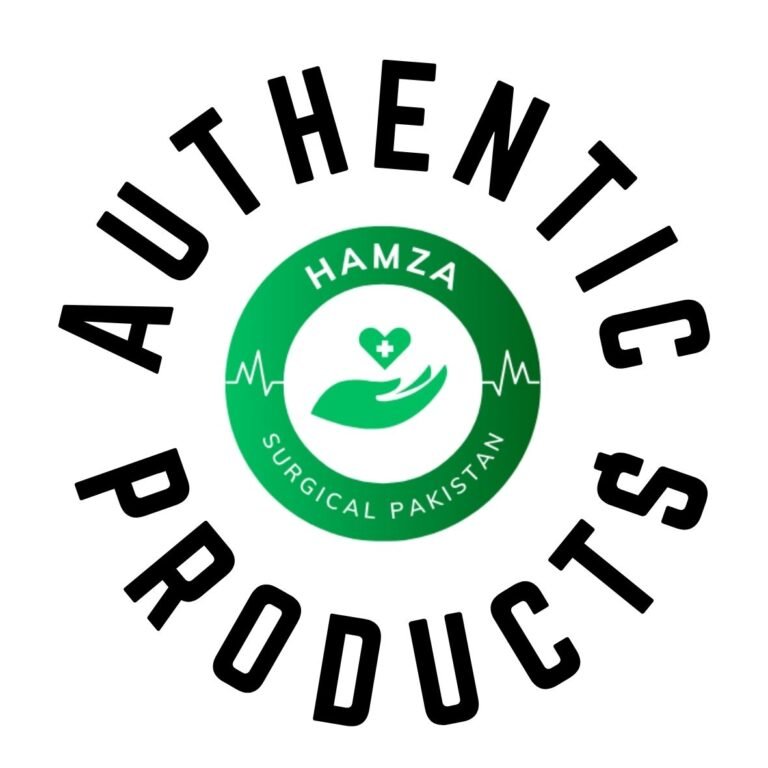
Why should you choose Hamza Surgicals?
For authentic medical devices and reliable service, visit Hamza Surgical for the latest prices and offers. Our products meet global healthcare standards and include trustworthy brands like Certeza, Omron, and Beurer. Purchase from Hamza Surgicals to ensure clinical-grade accuracy, longevity, and peace of mind.
Hamza Surgical is recognized as a leading provider of the best blood pressure machines in Pakistan. Dedicated to promoting healthy lifestyles, the brand prioritizes quality, accuracy, and user convenience in its products. With a strong legacy in the health and wellness industry since 1992, Hamza Surgical continues to uphold its commitment to excellence.
FAQ's
Manual mercury sphygmomanometers are traditionally considered the most accurate, but they require training and are less commonly used at home. For personal use, clinically validated digital monitors like the Omron are known for high accuracy. They offer consistent readings and even additional features like EKG monitoring.
A blood pressure reading of 140/70 mmHg indicates elevated systolic pressure with a normal diastolic pressure. This is known as isolated systolic hypertension and should be evaluated by a healthcare provider, especially in older adults.
- Check for validation: Look for clinical validation by medical authorities or organizations.
- Compare readings: Occasionally compare your device’s readings with those taken by a professional.
Calibrate regularly: Follow the manufacturer’s instructions for calibration.
The most reliable reading is taken with a manual mercury monitor by a trained medical professional. For home use, digital upper-arm monitors are generally the most accurate.
Both arms should be checked initially. If one arm consistently shows higher readings, that arm should be used. Usually, the left arm is preferred because it's closer to the heart.
Omron, Beurer, A&D Medical, and Welch Allyn are top brands known for accurate and reliable blood pressure monitors.
Yes, Omron monitors are clinically validated and widely used in hospitals and homes, making them a trusted choice for accurate blood pressure measurement.
One major mistake is incorrect arm positioning. Your arm should be at heart level and supported. Improper technique can lead to falsely high or low readings.
Not exactly. While 140/90 mmHg was once the standard threshold for hypertension, recent guidelines from health organizations now consider 130/80 mmHg as the starting point for high blood pressure.
- See a doctor: Medical advice is essential.
- Lifestyle changes: Reduce salt, manage stress, exercise, and eat heart-healthy foods.
- Medication: Follow prescriptions if your doctor recommends it.
Look for devices that are:
- Clinically validated (e.g., listed by the AHA or European Society of Hypertension).
- Upper-arm based, as wrist and finger monitors are less reliable.
- Omron BP monitors are frequently recommended.
This can result from white coat syndrome, stress, or physical movement. Always take 2–3 readings and average them after resting for at least 5 minutes.
- Sit upright with back supported
- Keep feet flat on the floor
- Place arm at heart level
- Avoid caffeine or smoking 30 minutes before
- Take multiple readings for accuracy
Yes. An arm that is too low or unsupported can raise readings. Keep your arm at heart level, supported, and relaxed.
Both are important:
- Systolic pressure (top) shows the pressure during heartbeats.
- Diastolic pressure (bottom) shows pressure between beats.
Higher systolic readings are more common in older adults and are closely linked to heart disease.
While you can feel your pulse manually, it’s not accurate for checking blood pressure. For true readings, a digital BP monitor is necessary.
The left arm is typically used unless a consistent difference is observed in the right arm. Use the arm with the higher reading for future measurements.
A diastolic reading consistently over 90 mmHg is a concern. A reading of 100 or more may indicate severe hypertension and requires immediate medical attention.
- Sit quietly for 5–10 minutes
- Take deep breaths
- Avoid conversation
- Make sure you’re not cold or uncomfortable
Blood pressure is usually taken on the left arm. However, if there's a difference between arms, always use the one with the higher readings.
Age Range | Normal BP (mmHg) |
18–39 years | Less than 120/80 |
40–59 years | Around 120/80 – 130/85 |
60+ years | Up to 140/90 may be acceptable |
- Cuff too small or large
- Talking during the reading
- Full bladder
- Incorrect arm position
- Recent physical activity or caffeine
Common medications include:
- ACE inhibitors (e.g., Lisinopril)
- Beta-blockers (e.g., Metoprolol)
- Calcium channel blockers (e.g., Amlodipine) Always consult your doctor for personalized medication.
Compare with a clinical reading
- Ensure proper usage (correct cuff size and positioning)
- Choose validated brands like Omron
Deep breathing exercises
- Drink water
- Lay down and relax
- Reduce salt and caffeine intake
- Seek medical advice if extremely high
130/90 mmHg is slightly above the normal range and may be classified as Stage 1 hypertension. It's not critical but warrants lifestyle changes and monitoring.
Yes, Omron is a globally recognized brand based in Japan, known for reliable and accurate blood pressure monitors.
A normal reading would still be around 120/80 mmHg, regardless of the device. Omron devices are designed to highlight abnormal readings clearly.
Your arm should be:
- Rested on a table
- At heart level
- Relaxed and supported
The auscultatory gap is a temporary disappearance of sound between systolic and diastolic readings. It can cause underestimation if not detected.
Yes, this is the ideal blood pressure reading for most adults.
Not always. Doctors often suggest lifestyle changes first unless you have other risk factors. Medication may be required if changes don’t help.
- Leafy greens
- Berries
- Low-fat dairy
- Whole grains
- Bananas (high in potassium)
- Beets
- Above 180/120 mmHg is a hypertensive crisis
- Requires immediate medical attention
Possibly, especially if you have other conditions like diabetes. Consult your healthcare provider.
180/120 mmHg or higher is considered stroke-level and needs emergency care.
Yes, hydration helps maintain healthy blood volume and circulation, which can support lower blood pressure.
- Resting heart rate below 50 bpm or above 100 bpm could be a concern
- Seek evaluation if persistent or accompanied by symptoms
- Normal: Less than 120/80 mmHg
- Elevated: 120–129/<80 mmHg
- Hypertension Stage 1: 130–139/80–89 mmHg
- Stage 2: 140+/90+ mmHg
Reiterating:
- Relax for 5 minutes
- Sit upright, back supported
- Arm at heart level
- No talking or moving
- Practice mindfulness or meditation
- Get regular check-ups
- Focus on lifestyle improvements
- Limit news and health anxiety triggers
Usually in the morning, but follow your doctor’s instructions. Consistency is key.
Whichever arm gives the higher and more consistent reading during your initial checks.
A manual monitor used by a healthcare provider. For home use, a validated digital upper-arm monitor is best.
Slight differences are normal. However, consistent gaps over 10 mmHg might indicate underlying vascular issues.
- Morning before eating or medication
- Evening before dinner
- Avoid measuring right after exercise or stress
- Lying flat with legs elevated can increase blood pressure
- Used in cases like fainting or low BP
Yes, 90 mmHg diastolic is the threshold for Stage 1 hypertension.
Some apps claim to measure BP using sensors or cameras, but they are not reliable or medically approved. Use a validated device.
Yes, if using a validated, upper-arm monitor and proper technique. It’s essential for tracking trends over time.
Fluctuations of 10–15 mmHg are normal depending on activity, emotions, or time of day. Significant or frequent swings should be evaluated.
180/120 mmHg or higher is dangerous and requires emergency attention.
Diastolic pressure of 120 mmHg or higher can indicate stroke risk and needs immediate medical care.
Temporary spikes of 10–30 mmHg are common with anxiety. Chronic stress may lead to long-term elevation.
- Beet juice
- Hibiscus tea
- Low-fat milk
- Green tea
- Pomegranate juice
- Compare with a clinical readingSeek medical help immediately
- Avoid salt, caffeine, and stress
- Monitor BP regularly
Follow a treatment plan if prescribed

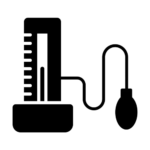 Sphygmomanometer
Sphygmomanometer


